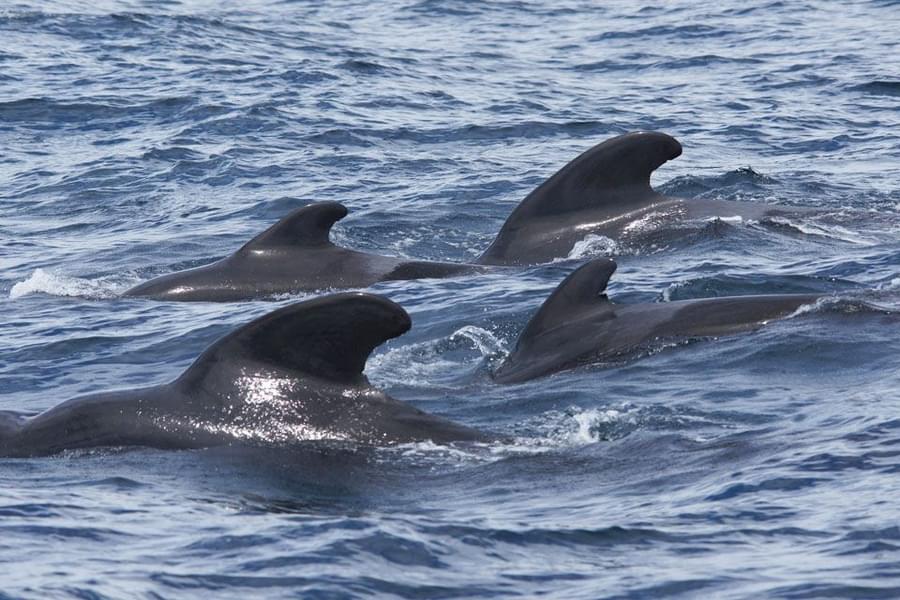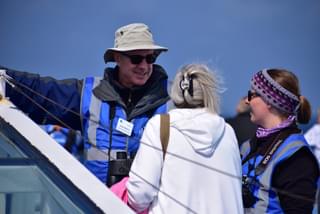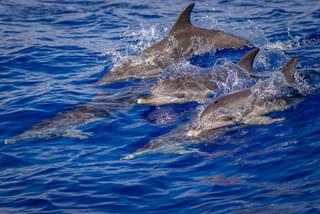Short-finned pilot whale
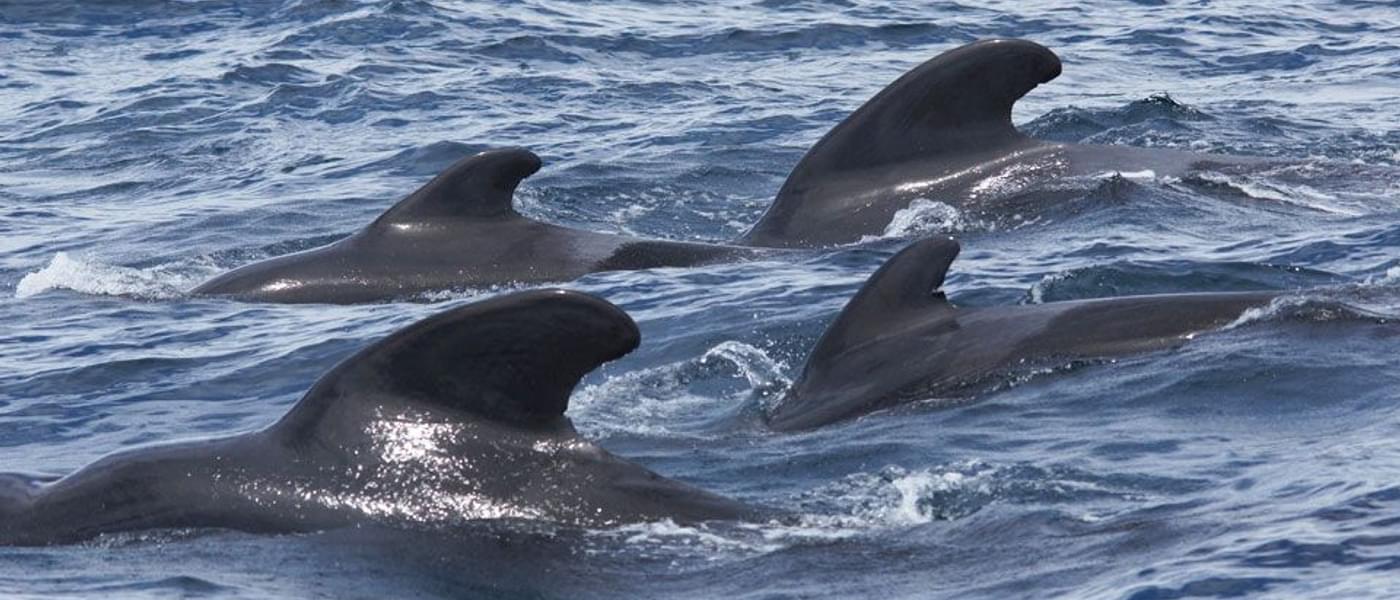
Globicephala macrorhynchus
3.5 - 7m
Black
Teeth
Dorsal fin
At sea, this animal is virtually impossible to tell apart from the long-finned pilot whale unless the pectoral fins are seen. When compared to long-finned pilot whales, short-finned pilot whales have fewer teeth, a different skull shape (not visible in the field) and a less pronounced bend in their pectoral fins. Short-finned pilot whales are glossy black in colour with a grey saddle patch behind their dorsal fin. Males have a larger, broader-based dorsal fin than females.
Key features:
- Bulbous melon, blunt beak, pale blaze from eye to saddle patch
- Broad, round dorsal fin forward to centre
- Dorsal fin looks like a smurf's hat or a witch's nose
- Long, slender pectoral fins, 1/6 of the body length
- Prominent arched tailstock when surfacing
Behaviour
As short-finned pilot whales feed at night, they are typically seen moving slowly at the surface during the day, allowing boats to approach them. They are also sometimes seen lob-tailing, spy-hopping and breaching. They are very social animals and are almost never seen alone. Typically shot-finned pilot whales are seen in family groups of 2 - 40 individuals but larger groups are sighted at feeding grounds.
Threats
The short-finned pilot whale is captured for aquaria around the world. It is also targeted in Japanese drive fisheries and hunts. Other threats include; entanglement in fishing nets and noise pollution.
Distribution
Unlike long-finned pilot whales, short-finned pilot whales like deep warm temperate to tropical waters worldwide. Some do overlap with the long-finned pilot whale in southern parts of the North Atlantic. The species tend to stay offshore unless their prey of squid re spawning in which case they may move inshore.
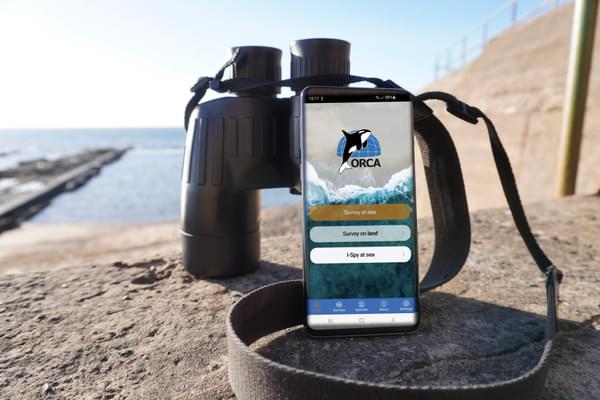
Study whales and dolphins as an ORCA OceanWatcher
The ORCA OceanWatchers online training course, along with a bespoke app, will enable everyone to collect data about whales, dolphins and porpoises. And it can be collected from anywhere that you can see the sea - whether that’s from your local beach, on holiday at the coast, scanning the seas from a cruise ship, travelling via ferry, or from your own boat.
You may also be interested in

